Jacobaea vulgaris common ragwort
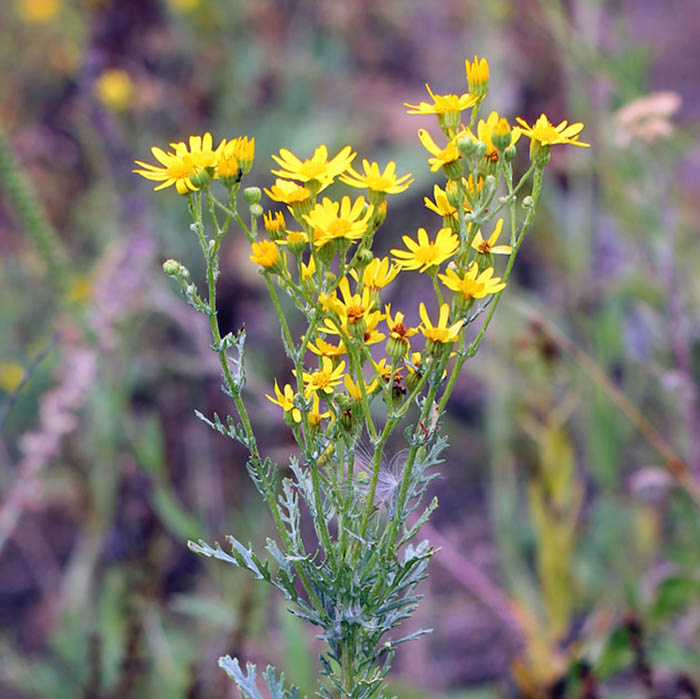
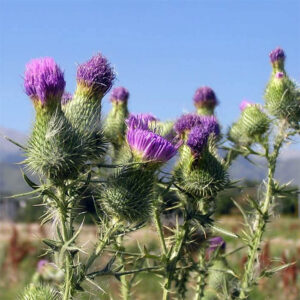
Quarantine plants, weeds, and invasive species pose significant challenges to agriculture, biodiversity, and public health. While they share similarities as unwanted vegetation, their management, impact, and legal handling differ. This article delves into these distinctions, highlighting harmful and toxic weeds, regulations in countries like the UK and Paraguay, and traditional and modern methods of controlling them.
Quarantine plants are non-native species that authorities monitor or restrict due to their potential to cause severe ecological or economic harm. They often include invasive species, which are particularly aggressive and capable of displacing native vegetation. Strict measures, including inspections and eradication programs, aim to prevent their spread.
Invasive plant species are non-native plants that establish themselves in new environments, often outcompeting local flora and disrupting ecosystems. For example, Japanese Knotweed in the UK damages infrastructure, while Parthenium Weed in Paraguay displaces crops and native plants.
Weeds can include both native and invasive plants that grow where they are not wanted. Some invasive plants, such as Giant Hogweed or Ragwort, are considered harmful due to their impact on health, ecosystems, or agriculture. Management focuses on localized removal to minimize immediate damage. If a harmful weed is found on your land site, it is not your fault – this is what they write on the website of the Ministry of Rural Affairs of UK. It is prohibited by law to plant or distribute quarantine plants into the wild nature. If you collect a pile of controlled weed, you must deliver it to a landfill licensed.
Some species can be added to compost, but not those that are controlled. So if some weed is a problem – we use complex methods to eliminate the problem.
We carry out weed control for farmers and agricultural enterprises, for municipal customers. Destruction of Sosnovsky’s hogweed. Preventive measures against weeds, agricultural technology and other methods. Clearing fields of weeds, shrubs and tree growth. Weed control, weeding, herbicides – we use them with success!

Jacobaea vulgaris common ragwort
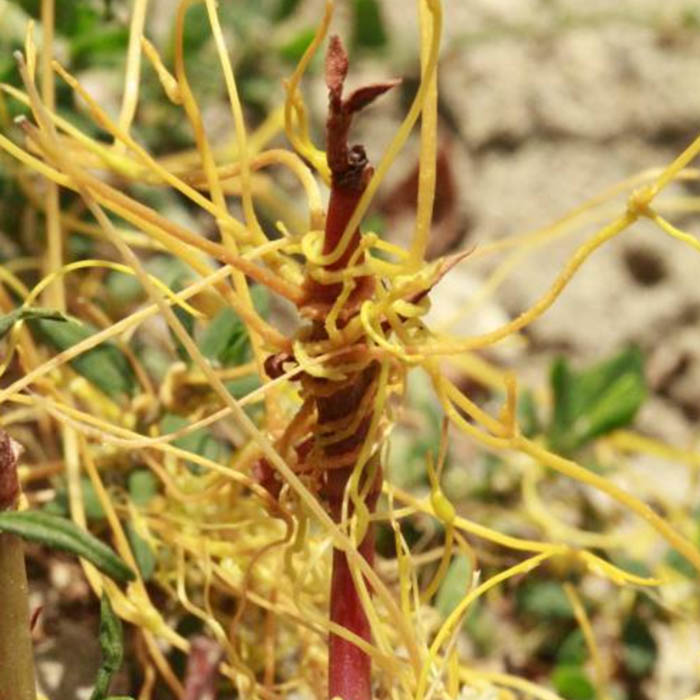
Cuscuta sp..
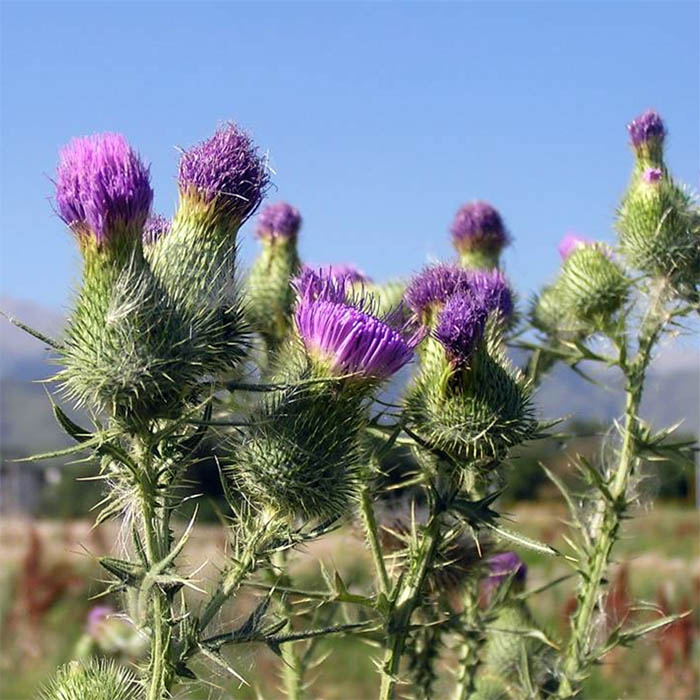
Cirsium vulgare Spear Thistle – common weed
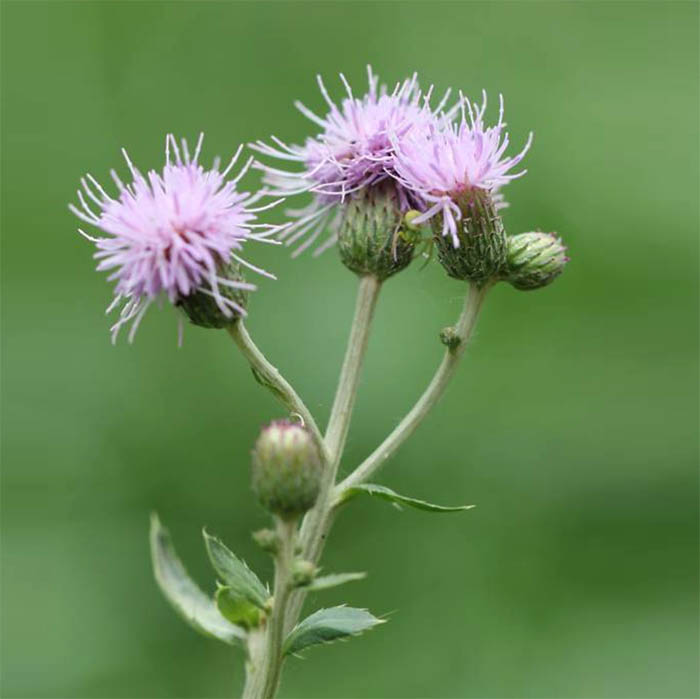
Cirsium arvense Creeping Thistle – weed since 1959

Ambrosia artemisiifolia – invasive plant
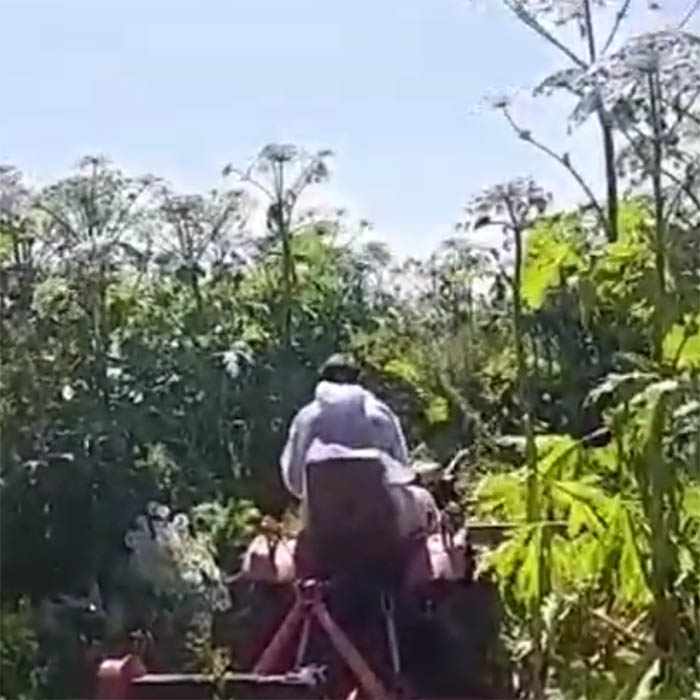
Heracleum Giant Hogweed
In agriculture and industry, various herbicides are used to control weeds.
There are selective herbicides for certain species and classes of plants, as well as continuous action. But in some cases the use of herbicides is prohibited.
Clearing fields of weeds, tree saplings, and shrubs is an essential step in land reclamation and field restoration. For example, if you purchase a plot of land and take it over in a plowed state in the fall, it may require reclamation. This could happen when buying land abroad or under circumstances where land restoration becomes necessary.
The use of herbicides is prohibited in protected areas, such as zones along water reservoir shores. In these areas, invasive plants like Sosnowsky’s hogweed may spread. So how can we manage this problem?
Weed control in protected areas requires innovative approaches. For example, in ports and industrial facilities across Europe, electric machines are used to burn weeds. To suppress their growth, competition is encouraged by overseeding with grasses and cereals that outcompete the weeds. Simply mowing and removing hogweed from protected areas is not enough—overseeding with cruciferous and cereal crops is also necessary to cover the soil and prevent the growth of invasive species like hogweed.
Biological control methods work selectively, making it essential to use a combination of techniques and innovations to effectively manage weed issues in protected areas.
Invasive plants are a botanical and biological term. Clearing areas of Sosnowsky’s hogweed and quarantine plants is a periodic task. Measures to control Sosnowsky’s hogweed are often supported by fines and subsidies, but other types of weeds, quarantine, and invasive plants receive less attention. In many regions, efforts depend largely on available funding for addressing the issue.
An invasive species, whether plant or animal, can spread in a given area and alter the existing biocenosis. In other words, invasive species disrupt and transform established ecosystems, negatively affecting biodiversity. These plants typically face few competitors, pests, or diseases in their new environment, allowing them to reproduce unchecked and dominate the space.
Protected zones are strips of land along linear infrastructure, such as roads, railways, gas and oil pipelines, and power lines. These are often disturbed ecosystems, which invasive plants and weeds readily colonize. In protected zones, periodic removal of tree saplings, shrubs, grass, and weeds is necessary to ensure the safety and reliability of infrastructure operations.
Toxic or harmful weeds can impact human health, livestock, and ecosystems:
United Kingdom
In the UK, invasive species such as Japanese Knotweed and Himalayan Balsam (Impatiens glandulifera) are regulated under the Wildlife and Countryside Act 1981. Landowners are legally obligated to control their spread. While fines apply primarily for spreading these species, not managing their growth can lead to disputes and legal consequences. We have a list of invasive species of plants and aquatic weed below.
Paraguay
Paraguay’s regulations focus on controlling invasive species that threaten agriculture, such as Siam Weed (Chromolaena odorata). While fines for private landowners are less common, negligence in controlling these species can lead to penalties, especially in agricultural zones.
Examples of weeds and invasive plants in the UK and Paraguay
Traditional methods of weed control:
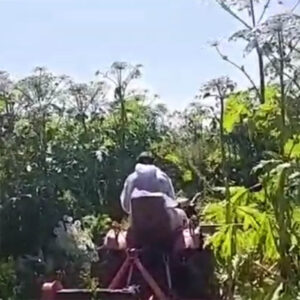
We employ a variety of effective techniques to manage weeds and control overgrowth in protected areas. For example, the removal of Sosnowsky’s Hogweed (Heracleum sosnowskyi) involves a combination of mechanical and chemical methods applied to its growth zones. Below are the primary methods used:
These methods, ranging from traditional practices to cutting-edge technologies, offer effective solutions for managing invasive and quarantine plants. Combining approaches often yields the best results while minimizing environmental and economic costs.
Quarantine plants, invasive plant, and weeds require special management. Countries like the UK and Paraguay demonstrate the importance of combining regulations with practical measures to curb the spread and impact of these species. Advancing weed control technologies ensures more sustainable solutions, preserving ecosystems and supporting agriculture worldwide.
If a harmful weed is found on your site, it is not your fault – this is what they write on the website of the Ministry of Rural Affairs.
It is prohibited by law to plant or distribute quarantine plants into the wild. It is a criminal offence to plant or cause to grow a non-native invasive species in the wild. Approximately 60% of invasive plants come from horticulture.
Key
EU – applies across EU, including the UK and Republic of Ireland: it is an offence to plant or cause these to grow in the wild. These are also banned from sale and gardeners possessing them should undertake measures to control them
EW – applies in England and Wales: it is an offence to plant or cause these to grow in the wild
NI – applies in Northern Ireland: it is an offence to plant or cause these to grow in the wild
RI – applies in the Republic of Ireland: it is an offence to plant or cause these to grow in the wild
Acacia saligna (golden wreath wattle) EU
Acaena spp. (pirri-pirri bur) NI
Ailanthus altissima (tree of heaven) EU
Allium paradoxum (few-flowered leek) EW, NI, RI
Allium triquetrum (three-cornered garlic) EW, RI
Alternanthera philoxeroides (alligator weed) EU
Andropogon virginicus (broomsedge) EU
Aponogeton distachyos (Cape pondweed) RI
Arundo donax (giant reed) NI
Asclepias syriaca (milkweed) EU
Azolla filiculoides (water fern) EW, NI, RI, Banned from sale in UK since 2014
Baccharis halimifolia (tree groundsel) EU
Cabomba caroliniana (Carolina fanwort, water shield) EU
Cardiospermum grandiflorum (balloon vine) EU
Carpobrotus edulis (Hottentot fig) EW, NI, RI
Cortaderia jubata (purple pampas grass) EU
Cotoneaster bullatus (cotoneaster, hollyberry) EW
Cotoneaster horizontalis (cotoneaster) EW
Cotoneaster integrifolius (entire-leaved cotoneaster) EW
Cotoneaster microphyllus (small-leaved cotoneaster) EW
Cotoneaster simonsii (Himalayan cotoneaster) EW
Crassula helmsii (Australian swamp stonecrop, New Zealand pygmyweed) EW, NI, RI, Banned from sale in UK since 2014
Crocosmia × crocosmiiflora (montbretia) EW
Disphyma crassifolium (purple dewplant) EW
Egeria densa (large flowered waterweed) NI, RI
Ehrharta calycina (purple veldgrass) EU
Eichhornia crassipes (water hyacinth) EU
Elodea nuttallii (Nuttall’s water weed) EU
Elodea spp. (waterweeds) EW, NI, RI
Fallopia japonica (RHS accepted name Reynoutria japonica) (Japanese knotweed) EW, NI, RI
Fallopia japonica × Fallopia sachalinensis [F. × bohemica] (RHS accepted name Reynoutria × bohemica)(hybrid knotweed) EW, NI, RI
Fallopia sachalinensis (RHS accepted name Reynoutria sachalinensis ) (giant knotweed) EW, NI, RI
Gunnera manicata (Brazilian giant rhubarb) RI
Gunnera tinctoria (giant rhubarb) EU
Gymnocoronis spilanthoides (Senegal tea) EU
Hippophae rhamnoides (sea buckthorn) NI, RI
Hyacinthoides hispanica (Spanish bluebell) NI, RI
Hydrocotyle ranunculoides (floating pennywort) EW, NI, RI, Banned from sale in UK since 2014
Heracleum mantegazzianum (giant hogweed) EU
Heracleum persicum (giant hogweed, Tromsø palm) EU
Heracleum sosnowskyi (giant hogweed) EU
Humulus scandens (Japanese hop) EU
Hydrocotyle ranunculoides (floating pennywort) EU
Impatiens glandulifera (Himalayan balsam) EU
Juncus planifolius (broad-leaved rush) RI
Lagarosiphon major (curly waterweed) EU
Lamiastrum galeobdolon subsp. argentatum (RHS accepted name Lamium galeobdolon ‘Florentinum’) (variegated yellow archangel) EW
Lespedeza cuneata (Chinese shrub clover) EU
Lonicera japonica (Japanese honeysuckle) NI
Ludwigia grandiflora (water primrose) EU, Banned from sale in UK since 2014
Ludwigia peploides (floating water primrose) EU, Banned from sale in UK since 2014
Ludwigia uruguayensis (water primrose) EW, NI, RI
Lygodium japonicum (climbing fern) EU
Lysichiton americanus (skunk cabbage) EU
Microstegium vimineum (Japanese stiltgrass) EU
Myriophyllum aquaticum (parrot’s feather) EU, Banned from sale in UK since 2014
Myriophyllum heterophyllum (broadleaf watermilfoil) EU
Nymphoides peltata (fringed waterlily) NI, RI
Parthenium hysterophorus (parthenium weed) EU
Parthenocissus inserta (false Virginia creeper) EW
Parthenocissus quinquefolia (Virginia creeper) EW
Pennisetum setaceum (crimson fountain grass) EU
Persicaria wallichii (RHS accepted name Koenigia polystachya) (Himalayan knotweed) RI
Pistia stratiotes (water lettuce) EW, NI, RI
Polygonum perfoliatum (RHS accepted name Persicaria perfoliata) (mile-a-minute weed) EU
Prosopis juliflora (mesquite) EU
Pueraria montana var. lobata (kudzu) EU
Rhododendron luteum (yellow azalea) EW
Rhododendron ponticum (rhododendron) EW, RI
Rhododendron ponticum × Rhododendron maximum (rhododendron) EW, RI
Rosa rugosa (Japanese rose) EW
Rubus spectabilis (salmonberry) NI, RI
Sagittaria latifolia (duck potato) EW
Salvinia molesta (giant salvinia) EU
Smyrnium perfoliatum (perfoliate Alexanders) EW
Spartina spp. and hybrids (cord-grasses) NI, RI
Stratiotes aloides (water soldier) NI
Trapa natans (water chestnut) NI, RI
Triadica sebifera (Chinese tallow tree) EU
Zostera japonica (dwarf eelgrass) NI, RI
Aquatic weeds
The problem is the shallow ponds or larger lakes can become choked with weeds especially where there is nutrient rich run-off from surrounding agricultural land.
Species that are aquatic weeds and banned from sale are:
Alternanthera philoxeroides (alligator weed)
Azolla filiculoides (fairy fern)
Cabomba caroliniana (Carolina fanwort)
Crassula helmsii (New Zealand pygmy weed)
Eichhornia crassipes (water hyacinth)
Elodea nuttallii (Nuttall’s waterweed)
Gunnera tinctoria (Chilean rhubarb)
Hydrocotyle ranunculoides (floating pennywort)
Lagarosiphon major (curly waterweed)
Ludwigia grandiflora (water primrose)
Ludwigia peploides (creeping water primrose)
Lysichiton americanus (American skunk cabbage)
Myriophyllum aquaticum (parrot’s feather)
Myriophyllum heterophyllum (broadleaf watermilfoil)